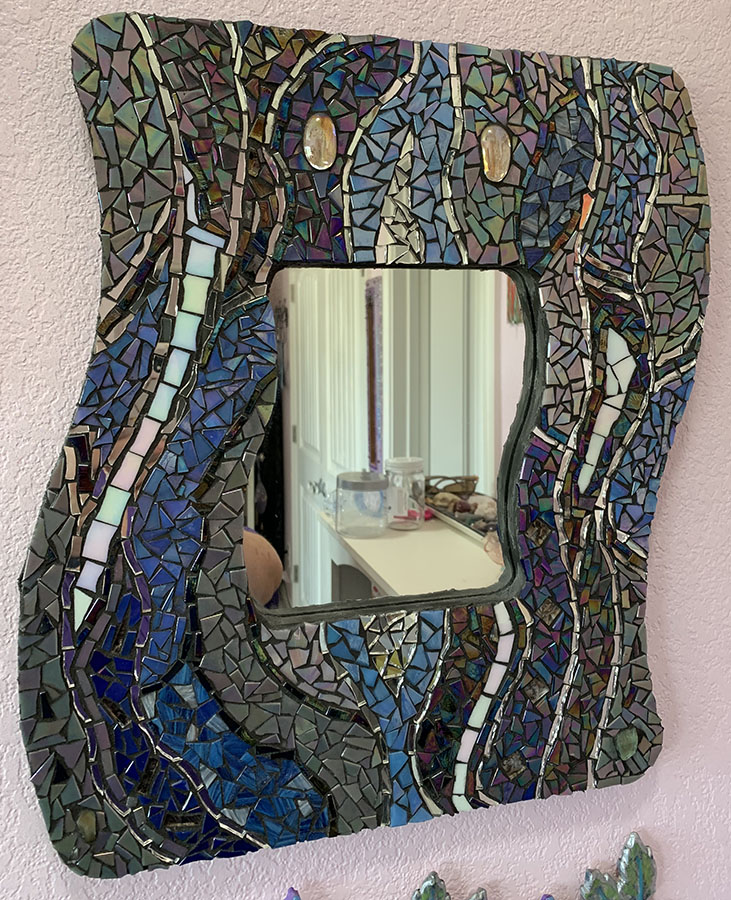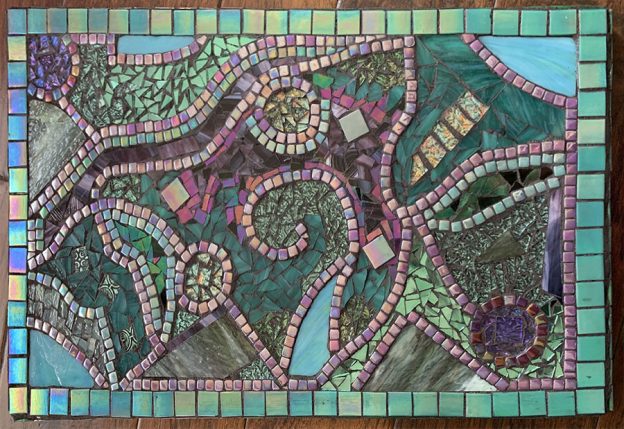Artist Marianne Limandri’s mosaics are good examples of how to create more interesting designs by thinking in terms of curves instead of straight lines.
Straight line segments (or their imperfect representations) occur all the time in nature, from cactus needles all the way up to the endless horizon on the open sea, but they are the exception more than the rule. Nearly every other element in any given natural scene will be anything other than a line.
Lines by Default
Straight lines are much more common in human artifacts and architecture. If you are trying to train your mind to see and depict the natural world, you need to unlearn some default modes of visualization.
Start thinking of lines as temporary starting points and design aids that are discarded as the work progresses.
TIP: Whenever I sketch out a figure from my imagination, I press my pencil lightly because I know that my first lines are more likely to be a straight-line skeleton (to work out dimensions) than an edge of the figure, which will be curved in some way most likely.
Don’t Rush
I’ve noticed that most of the artwork that I have botched was flawed because I rushed through initial decisions.
That is why it is best to work in a series of smalls, which is something I do in my own work. If I notice something I would rather have done differently, I soon have an opportunity to do so in the next piece.

Edges and Boundaries
Edges need to be smooth to be safe and practical for handling, but they do not need to be straight.
The backer/base for a mosaic mirror frame can be cut from plywood using a jigsaw, but most people are so eager to get started with the mosaic part of the process that they don’t even think about the possibility of making the design more interesting in the shape they cut.
A simple “hour-glass” or “waisted” frame could be cut as easily as a rectangular frame, and so could all sorts of shapes and variations, and so why not consider them?
Sketch a few shapes and see what you like best and how the shape affects the design you put on it.
I like how Marianne’s curving work lines are in sympathy with the curves of the edges without being rigid echoes of the edges.
Motion and Visual Interest
Notice how the curving andamento of the mosaic mirror frame creates the illusion of motion.
Curves suggesting motion is caused by how the focus of the eye moves across an image.
Our eyes dart around in straight lines over the face of the image. A curve will appear to get closer or further away from the point of focus, especially if the straight-line motion of the eye is roughly parallel to the overall direction of the curve.

Yard Sales
Yard sales were created by God for artists making found-object artwork. They are sources of literal inspiration that often feels heaven sent. You can find all sorts of odd eccentric stuff at yard sales that you couldn’t find anywhere else, other than on Ebay, which is the world’s largest virtual garage sale.
Yard sales also make great sources of raw materials for all mediums of visual art. You can find some great old frames and tables to use for mosaic bases, and you can get them at a very low price.
Avoid particle board and veneer over particle board. You can find old solid-wood quality bases. You don’t have to use the first thing you find.


Leave a Reply